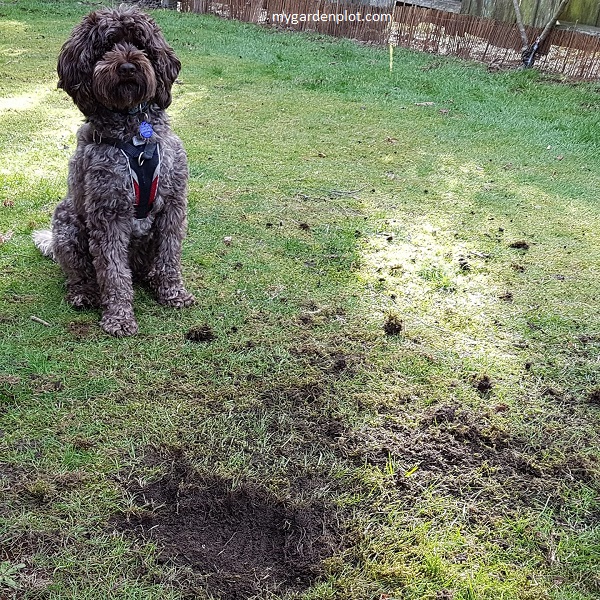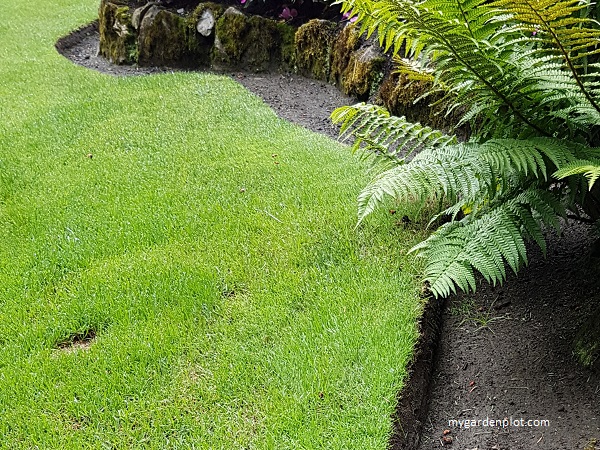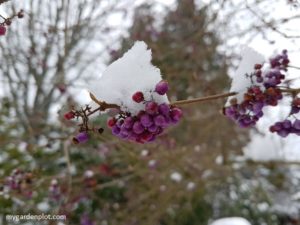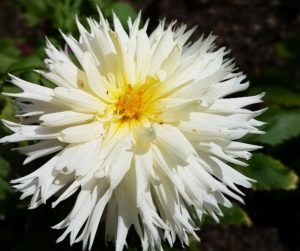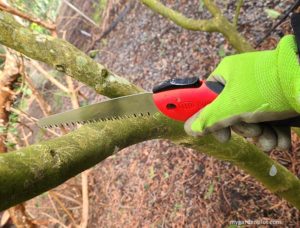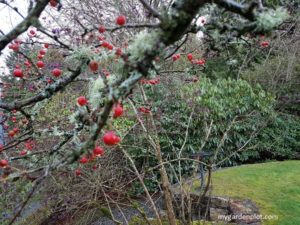Garden And Lawn Styles
For those who have a grassy area as part of your garden and landscape design, the following maintenance tips for how to take care of a lawn will help you plan those tasks to ensure your lawn looks great and is healthy all year long. Here we include seasonal tips such as fertilizing and overseeding, and a care guide including watering, mowing and aerating. And at the end of the page gardening checklists to help schedule your tasks.
The best way to approach your lawn care is by knowing what you wish to achieve. Some homeowners must have a large lawn perfectly mowed with straight lines while others have a more carefree approach striving to work within natures’ principles of practicality and environmental needs. We like the less manicured approach of an informal design, and preferably a small lawn as an attractive contrast to the garden beds. Having a big lawn increases watering and workload. And with water shortages and environmental concerns, reducing a lawn has many benefits besides just lowering the cost of watering. Regardless of size or style, we still need to know the basics of how to take care of a lawn.
Lawn Care In The Pacific Northwest
Here in the Pacific Northwest, lawn care is pretty much the same as anywhere else. However, exception lies with the type of grass best suited for our cool and wet climate and the effect our weather has on the soil conditions (see Dolomite Lime section below). We are also increasingly experiencing much drier summers due to climate change. We share the basics nevertheless, when it comes to lawn care.
Grass Types
Grass varieties for lawns fall between cool-season and warm-season types. And of course, as with all plants, new cultivars of grasses keep coming out each year. Check with your local nursery what is available for your area. Cool-season varieties tend to stay green year long, while warm-season types turn brown during cold winters.
If you have similar mild, moist weather conditions as the Pacific Northwest, the cool-season varieties such as fescues and perennial ryegrass work best. They are recommended for high traffic, are easy to seed, drought and cold tolerant, and stay green all year long – though it can go dormant in the summer and adopt a “blonde” straw colour during those heat-stressed days if not watered. The popular Kentucky bluegrass is another cool-season grass, but it is not suitable for our area in the Pacific Northwest due to its short root system and needing a lot of lime to thrive in our area.
Watering Your Lawn
Lawns need watering, but how much and when is equally essential. And depending on the type of grass and soil condition, this can play a significant part in your lawn care needs. Lawns respond better to infrequent but penetrating deep watering. Short, frequent watering in the heat of summer can lead to fungal diseases and weak root systems. If you have healthy moisture-retentive soil, once a week is all your lawn needs. The industry measuring standard indicates about 2.5 – 3 cm (1 inch) of water per week for lawns. If you are looking for a picture-perfect lawn or have shallow, sandy soil, then watering twice a week for about half-hour may be needed. Needless to say, a lawn sprinkler is necessary for the job. Very few of us have the patience to stand there with a watering hose long enough for the water to penetrate deeply.
Schedule to water your lawn early in the morning before 7:00 am. This timing gives the grass time to dry before the sun, and summer’s heat begins to evaporate the moisture. Avoid watering in the evening as this can lead to environmental conditions ideal for fungal disease.
In the Pacific Northwest, nature usually provides enough moisture outside of the summer months. Our sprinkler generally only needs to be turned on at the end of spring and through to early autumn. This may differ for your area. A quick way to check if your grass needs water is to step on it and see if it bounces back up – this is a healthy sign and indicates your lawn receives enough water.
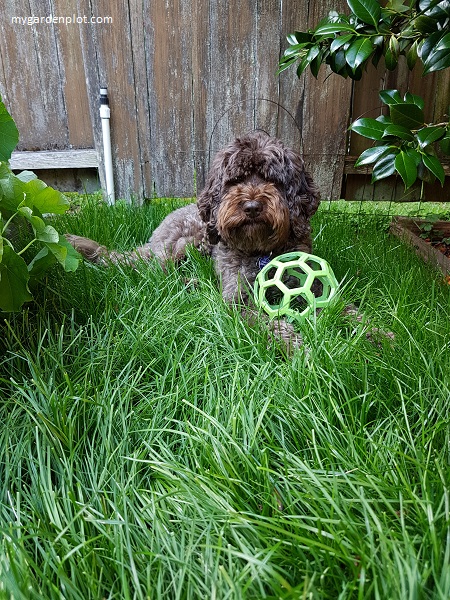
Mowing Lawns
Mowing the lawn is a chore but one that needs to be done. If you can find a family member to “volunteer,” all the better. But how often should we mow the lawn, and by how much should the grass be cut? And do you have your lawn mower ready?
The taller your grass is, the healthier it will be. It will have deeper roots and stay greener through hot weather. Also, by leaving it to grow a little taller means less mowing. Cutting it too short will stress the grass and allow light down to soil level and stimulate weed growth. Cut no more than 2.5 – 3 cm (1 inch) at a time. It should be no more than one-third of the grass blade. As a guideline, the fescues and perennial ryegrass varieties can be a height of 7.5 – 9 cm (3 – 3.5 inches) in summer, while in spring or fall, it can be 5 – 6.5 cm (2 – 2.5 inches) in height. How often you mow will depend on how fast your grass is growing. If you wish a more uniformed appearance, then frequent mowing and only cutting a little is the best route to take.
A good rule to also remember is not to mow the grass when it is wet. Wait until it is dry. It will make the job much easier. Plus, keep your mower blades sharp for a clean cut and thus avoid tearing the grass.
Aerating Your Lawn
Periodic aeration is essential in taking good care of your lawn so oxygen and water can penetrate the soil. This is basically poking 10 cm (4 inches) holes into the soil using a manual or power aerator. This is needed for high traffic, compacted areas too. Aerating your lawn helps to loosen the soil, encourage healthy and deeper root growth, and it preps the lawn for fertilizing down to the root zone. Aerate when the soil is moist in early spring and autumn, and before overseeding and fertilizing. Don’t aerate a soggy lawn. You want it wet but not saturated from prolonged rainfall.
If you have a small lawn, aerating your lawn can be done manually using a spike aerator or even your garden fork. The spike aerator is better as you use your foot to press down. It is relatively cheap and easy to use. There are various manual versions that are available at garden centres. Alternatively, if you have a large lawn, you can rent or purchase a motorized lawn aerating machine.
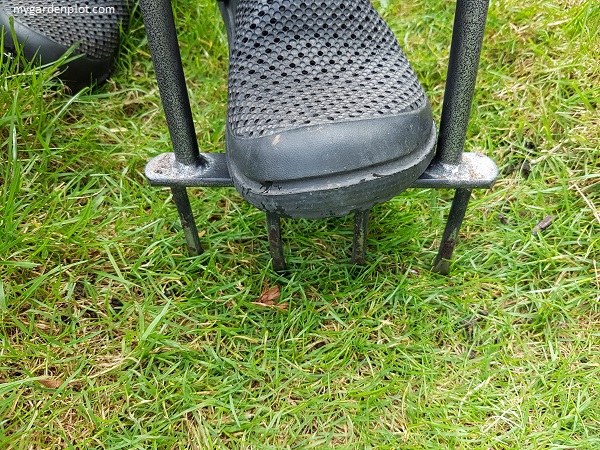
RELATED TOPIC: Essential List Of Gardening Tools
Weed Management
The never-ending duty of weed management for garden beds needs to be applied to lawns. Given a chance, weeds will compete for water and nutrients. Plus, they can harbour pests and other bad bugs and diseases. The best control for weeds in a lawn may take time without using toxic chemicals. Often the process of mowing, the use of high-nitrogen fertilizing ensures the grass is healthier and more able to cope against weed growth. And of course, there are those dandelions – my ever-present dandelion weed tool is always at my side to help pull those hardy perennial weeds straight out by the root without using harsh toxic chemicals.
Fertilizing Your Lawn And Grasscycling
A slow-release lawn-specific fertilizer for your region or a high-nitrogen organic fertilizer applied in autumn will keep your lawn healthy over the winter. The fertilizer can also be used in late spring. To encourage root growth in early spring, consider using a fertilizer with a higher phosphate (second number), such as 10-20-5, which is a good turf starter. Then later in season, fertilize with higher nitrogen (first number). Don’t fertilize your lawn until you have mild weather and temperatures are at least 15C (60F).
Alternatively, if your lawn is weed-free, leaving light grass clippings, which must be cut into small pieces, will add nutrients back to your lawn as they decompose. This process is called grasscycling. Don’t leave heavy lumps of cut grass – these should be raked off as it will cut off air and light from the grass.
Dolomite Lime
Due to our high rainfall season, we often need to adjust the lawns’ pH levels in the Pacific Northwest. Spreading dolomite lime across the lawn helps make the soil more alkaline and adds calcium and magnesium, prime nutrients for a healthy lawn, that would have leached out of the ground by the high rainfall. The ideal pH target is 6.0-7.0. If in doubt, test your soil – most garden centres have inexpensive pH test kit or electronic pH metre in stock. If the test indicates your soil’s pH is above 6.0, there is no need to add lime.
Dolomite lime should be applied yearly, preferably in autumn but can be applied in early spring too. It can be spread by hand (use gloves). Of course, there are wheeled spreaders at the garden centre if you have an unusually large lawn to lime. Water the lawn afterwards to wet down the dolomite lime off the grass blades to the soil level. It is not known to be toxic to pets, but it is best to keep them off the grass for a few days if you have pets.
Overseeding
If you have a patchy lawn or thin areas, sow grass seeds over the area. It does not hurt to spread over the existing lawn. It is best to seed your lawn in autumn when the soil is still warm, and the rain will help with germination to establish before the next summer. Seeding your lawn can also be done in spring, but germination may take a little longer and ensure it is watered as it gets drier.
Seasonal Gardening And Lawn Checklists
As for our gardening companion and the grass, well, let’s just say we are still exploring ways to stop our dog digging in grass! We welcome all suggestions. LOL
